“A history of horror novels and short stories over the centuries.”
That’s what I had in mind when I began this project, a kind of horror fiction retrospective. But things got complicated. It was too broad a scope for a single blog entry.
So I whittled it down, focusing on the history of American horror novels in particular. Consider this the first in a series. Future installments will examine novels produced in other countries, short stories, film and TV, and more.
With that introduction out of the way, I submit to you: A brief history of horror novels in America, from the 1800s to the 2020s. There’s nothing to fear, I promise. Strike a match. Take my hand. Walk with me into the darkness…
A Brief History of Horror Novels in America
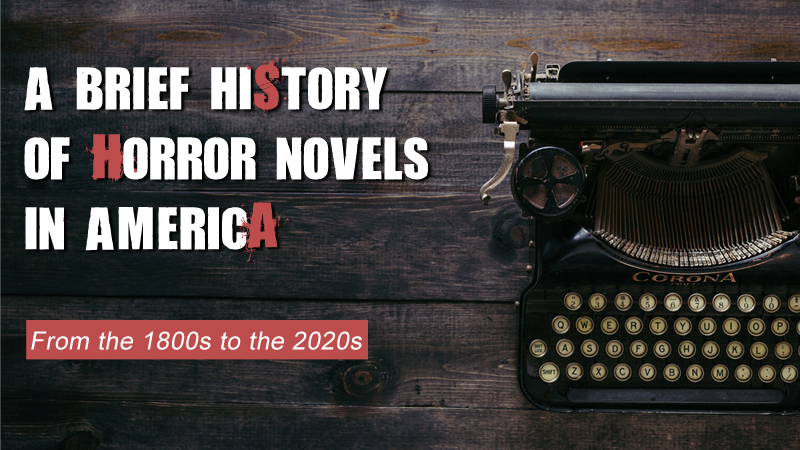
The origins of horror in written form go back a long, long way. Horrific scenes can be found in some of the earliest religious texts. Ancient cultures were fascinated with ideas relating to the afterlife, good versus evil, demons and the like.
But the emergence of horror as a genre came much later. According to many literary historians, this emergence began during the Gothic period. Gothic books combined horror with Romanticism (with a capital ‘R’). Gothic fiction can be traced back to 1764, when the English author Horace Walpole published the novel The Castle of Otranto.
Most of the early writers of Gothic horror were English. That was where the sub-genre originated. Gothic writers didn’t spring up across the pond, in America, until the 1800s. Those writers would lay the groundwork for horror novels in the United States.
Here’s a look at some of the most influential horror writers in America, from the 1800s through today.
Edgar Allen Poe: 1800 – 1849
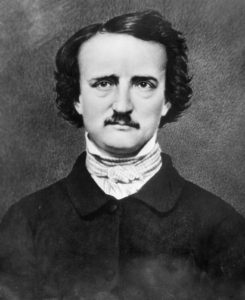
Edgar Allen Poe (1800 – 1849) was an early American horror writer. Like many writers of his day, he worked across multiple genres. Some say Poe invented the detective story that has become so popular in our time.
But today, we mostly remember him for his dark tales of suspense and macabre.
The legendary American writer H.P. Lovecraft (below) credited Poe as being the most important pioneer of weird fiction and supernatural terror in America.
In his 1920s essay entitled “Supernatural Horror in Literature,” H.P. Lovecraft wrote:
“Poe’s spectres thus acquired a convincing malignity possessed by none of their predecessors, and established a new standard of realism in the annals of literary horror.”
Technically speaking, Poe was not a horror novelist. He mostly wrote poetry and short fiction. His only complete novel, The Narrative of Arthur Gordon Pym of Nantucket, was more of an adventure story than horror — though it did feature cannibalism at one point.
Still, Edgar Allen Poe had a strong influence on the writers who followed him. And thus he played a role in the history of American horror novels.
H.P. Lovecraft: 1890 – 1937
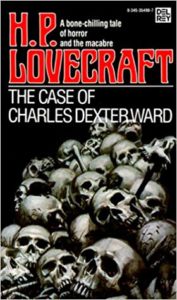
Any discussion on the history of horror fiction in American would be incomplete without a mention of H.P. Lovecraft. Lovecraft specialized in writing “weird tales” (a term he often used to describe his own work), as well as cosmic horror. Supernatural themes and elements were common threads in his work.
Lovecraft wrote dozens of short stories, a few novellas, and one complete novel (The Case of Charles Dexter Ward, pictured here).
He created the Cthulhu Mythos, a kind of shared universe that connected many of his stories. A unifying theme in his work is that humans are “small” and largely irrelevant in the cosmic scheme of things.
In a letter to the editor of Weird Tales magazine, Lovecraft once wrote:
“Now all my tales are based on the fundamental premise that common human laws and interests and emotions have no validity or significance in the vast cosmos-at-large.”
H.P. Lovecraft was largely unknown during his lifetime. Today, his work has achieved a near-legendary status. Many of today’s well-known writers, including Stephen King and Neil Gaiman, have cited Lovecraft as one of their early influences.
Shirley Jackson: 1916 – 1965
Shirley Jackson was another instrumental figure in the history of horror stories and novels in America. Even today, in the 2020s, she has a lasting impact.
Shirley Jackson wrote six novels and more than 200 short stories. While she wrote across multiple genres, she is best known for her work within the horror genre in particular.
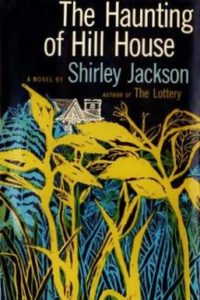
In 1959, Jackson published The Haunting of Hill House, cementing her position as one of the greatest gothic horror writers of her time. Hill House was one of the first — and, some would say, one of the best — haunted house novels in America or anywhere else.
It has certainly been influential. Jackson’s novel was adapted for film twice under the shortened title The Haunting, once in 1963 and again in 1999. (Watch the first one; don’t bother with the second.)
In 2018, Hill House was resurrected yet again for a Netflix original series directed by Mike Flanagan. Just know that the Netflix series is loosely based on the original novel.
Stephen King: 1970s to Present
What can I say about Stephen King that hasn’t been said before and you don’t already know? Well, maybe a few things. But let’s start with the obvious.
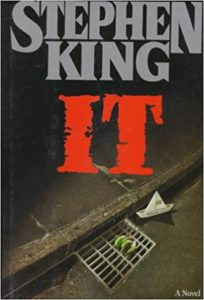
Stephen King has influenced the horror genre in general — and American horror in particular — more than any other writer living or dead. He authored such seminal works as Carrie, Salem’s Lot, The Shining, The Stand, Pet Cemetery and It (to name but a few).
In my view, he’s also part of the reason why we are now seeing renewed interest and commercial popularity within the horror genre, as we move into the 2020s.
This past Halloween, a total of three kids visited my house wearing Pennywise the Clown costumes. Three. Keep in mind this is 33 years after that novel was written. That is some serious staying power.
Decades of Dark Fiction
Horror fiction in America has had its ups and downs. It began in relative obscurity, rose to a popular peak, and then faded.
But it has never completely vanished and never will. The thrill we get from reading horror novels or watching scary movies are part of human nature. And human nature has no shelf life.
Here are some dark fiction highlights from the past 50 years or so.
1970s: The Golden Age of Horror Novels in America
The 1970s ushered in a kind of “Golden Age” for horror novels in America, and it stretched into the ’80s as well.
During the 1970s, horror novels began to enjoy greater commercial success and more widespread readership. Prior to that, they were largely the stuff of fringe readers and “weirdos.” They weren’t mainstream.
But in the 1970s, that began to change. Horror novels started popping up on bestseller lists. They became household names.
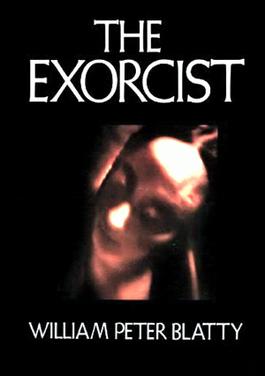
Many literary critics and historians consider the ’70s to be the start of the “contemporary horror” period in America, though that term is a slippery one.
The 1970s gave us a panoply of great American horror novels, including the following:
- The Exorcist, by William Peter Blatty (1971)
- Hell House, by Richard Matheson (1971)
- Carrie, by Stephen King (1974)
- Jaws, by Peter Benchley (1974)
- Interview with the Vampire, by Anne Rice (1976)
- The Omen, by David Seltzer (1976)
- The Amityville Horror, by Jay Anson (1977)
- Ghost Story, by Peter Straub (1979)
During the 1970s, horror novels emerged from the shadows and entered the mainstream. They sold well, for the most part. (The paperback version of Stephen King’s Carrie sold over a million copies in its first year alone.) These books were also being adapted onto the big screen, where they often earned blockbuster status.
In his wonderful and well-researched book, Paperbacks from Hell: The Twisted History of ’70s and ’80s Horror Fiction, Grady Hendrix described the 1970s as “the devil’s decade.” During the ’70s, he claimed, horror novels became a lot more frightening and intense. Many of them began to feature the devil and/or demonic possession. And readers couldn’t get enough of it.
As Grady explained:
“Descended from the pulps, occult horror novels at the dawn of the ’70s still felt like places where The Guardians would feel at home. But after The Exorcist hit movie screens in 1974, horror fiction scraped its pulp influences off its shoe like a piece of old gum … Satan wasn’t a threat that you met in remote mansions or on Jamaican plantations. Now the devil was within. Satan was no longer your next-door neighbor — he was you.”
Grady Hendrix, Paperbacks from Hell (2017)
Going forward, we would encounter a new kind of horror novel in America. One that was less pulpy and more frightening.
1980s: The Boom Continues
The heyday of horror novels in America, which began in the 1970s, would carry over into the 1980s as well. But it faded during the second half of that decade. In terms of bestsellers and breakthroughs within the genre, the ’80s pale next to the ’70s.
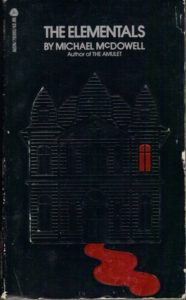
Still, the decade gave us some notable works of dark fiction. Noteworthy horror novels published during the 1980s include:
- The Elementals, by Michael McDowell (1981)
- Legion, by William Peter Blatty (1983)
- The Woman in Black, by Susan Hill (1983)
- It, by Stephen King (1986)
- Swan Song, by Robert McCammon (1987)
- The Queen of the Damned, by Anne Rice (1988)
- The Silence of the Lambs, by Thomas Harris (1988)
1990s: A Downtime for the Genre
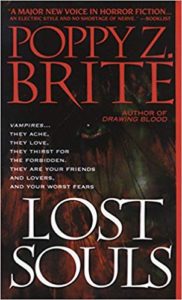
The 1990s marked a relative low period for horror novels in America. It’s not that they weren’t being produced. They were. They just weren’t getting the same attention or earnings they enjoyed during the 1970s and ’80s.
Breakout horror writers of the 1990s included Poppy Z. Brite (Lost Souls) and Kathe Koja (The Cipher, Bad Brains), among others.
Traditional horror novels fell out of vogue during the late 1990s and into the 2000s. Publishers often labeled them as “supernatural suspense” or “dark fiction,” or any number of other euphemisms. Once a commercial force to be reckoned with, the American horror novel faded into the shadows during the ’90s.
2000 – 2020: A Renewed Interest in Horror Fiction?
Over the past few years, we’ve seen increased interest and output within the horror genre. There are several reasons for this, as mentioned below.
Some notable trends within the past decade:
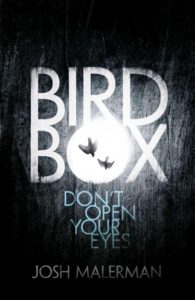
- Stephen King’s It was adapted for the big screen, twice, with both movies enjoying commercial success.
- Josh Malerman’s 2014 horror novel Birdbox become a hit and was later adapted for a Netflix movie.
- We saw yet another adaption of Shirley Jackson’s The Haunting of Hill House, this one a miniseries on Netflix.
- On the movie side of things, films like The Conjuring and A Quiet Place enjoyed huge success at the box office.
- And AMC’s The Walking Dead continues to shuffle along, having spawned a series of novels set in that fictional world.
As of yet, the horror genre hasn’t regained the commercial popularity it enjoyed during the 1970s and ’80s. That’s partly because it has evolved since then, branching out in new directions and forms. The very definition of a “horror novel” has become more ambiguous than in the past.
But if the bullet-point trends above are any indication, readers and viewers still have quite an appetite for horror … or dark fiction, or whatever you want to call it.
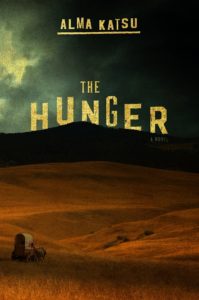
And why wouldn’t they? We, as humans, will always have fears. And some of us will always enjoy probing those fears, within the relative safety of fiction.
As Sara Roncero-Menendez wrote in an article for Simon & Schuster’s Get Literary Blog: “I think the most important thing that I take away from reading horror is that everything is surmountable and survivable.”
The genre taps into universal themes that we can all relate to, things like fear and loss, hope and survival.
Kate McHale from the book retailer Waterstones believes nostalgia is playing a role in the current resurgence of horror fiction. She points to the TV series Stranger Things and the movie version of It (both set in the 1980s) as key drivers of consumer demand.
In 2018, McHale told The Telegraph:
“I would say that one of the huge things last year was the film IT, which had a really brilliant impact on the sales of the book … That, combined with Stranger Things, really drove sales in the genre.”
It’s a kind of cycle. Horror novels often pave the way for TV and film adaptations, which increase sales for the books that spawned them. People see the movie or watch the show, and then they go back and buy the original source material. This, in turn, encourages new and innovative writers to get into the genre and push it forward.
The popularity of horror novels in America has ebbed and flowed over the years, and it will continue to do so. But it will never die. After all, it uses human fear to achieve the desired effect. And fear is eternal.
